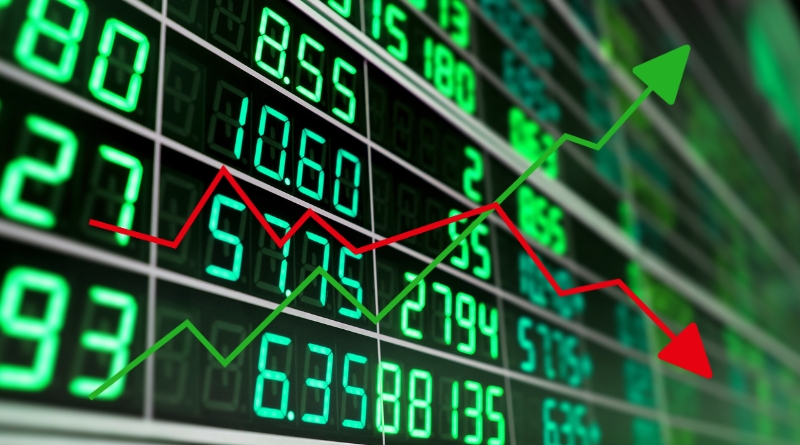US-China Trade De-Escalation Hopes Boost Global Stock Markets
Global Markets Jump on Hopes of US-China Trade Peace
The financial markets breathed a sigh of relief this week.
Why?
Because investors saw signs that the long-running tension between the United States and China might finally be cooling down. And when the world’s two biggest economies start playing nice, stock prices tend to react quickly—and positively.
Let’s dive into why the markets jumped and what it could mean for your investments.
What Sparked the Stock Surge?
It all started when talk resurfaced around easing trade restrictions between Washington and Beijing. Reports highlighted that both countries seemed more open to dialogue instead of trading threats.
This shift in tone has been seen as a potential step toward de-escalating their years-long tariff battles and supply chain disputes.
That hint of diplomacy was enough to send investors back into risk-on mode.
Major indexes rallied:
- S&P 500 rose nearly 1%
- Dow Jones Industrial Average climbed over 300 points
- NASDAQ Composite jumped by more than 1.3%
Investors weren’t just reacting emotionally. They’re betting on improved economic stability, better trade flow, and healthier business profits if these two heavyweights stop clashing.
Why the US-China Relationship Matters to You
You might be wondering, how does this affect your portfolio or daily life?
Let’s break it down.
- Trade stability reduces supply chain disruptions. That means fewer shortages and more predictable prices for goods worldwide.
- Markets often perform better during periods of global cooperation. Less uncertainty tends to boost investor confidence.
- Better relations support large US multinational companies. Firms like Apple, Tesla, and Nvidia have significant exposure to Chinese markets.
So even if you’re not actively trading, this matters. A smoother global trade landscape can lead to more consistent economic growth, and that’s good news for jobs, buying power, and investment returns.
Chinese Stocks Also Rally
Optimism wasn’t just limited to Wall Street.
Markets across Asia saw similar momentum. Major Chinese indexes like the Hang Seng and Shanghai Composite closed firmly in the green. Investors in China appeared just as eager for signs of stability after years of policy uncertainty and global scrutiny.
This isn’t just positive sentiment—it could be a real inflection point.
If meaningful changes happen between the countries, both stock markets may enjoy a prolonged tailwind.
Related read: If you’re interested in learning about which sectors benefit most during global upswings, check out this article on trading strategies for bull markets.
What’s Fueling the Trade Optimism?
While no major deal has been signed yet, several factors are suggesting progress:
- Senior officials from both countries have resumed regular talks.
- The US hinted at rolling back some tariffs set during previous trade wars.
- China recently pledged stronger support for foreign investment policies.
Each of these steps is small but important. They speak to a potential thaw in previously icy relations. And even small steps can reshape how countries do business together.
For traders watching closely, this renewed willingness to cooperate could signal profitable windows.
How Should You Think About This as an Investor?
Markets are emotional. But successful investing requires a steady hand.
Here are a few things to keep in mind:
- Don’t chase surges. A quick jump in asset prices doesn’t always mean a long-term trend. Use caution before jumping into hot stocks.
- Diversify your holdings. Relying too heavily on one sector—like tech or manufacturing—leaves your portfolio exposed to global politics.
- Follow economic indicators. Optimism is great, but back it up with data. Watch key exports, corporate earnings, and trade metrics.
Looking for tips on staying grounded in volatile markets? Start with this guide to smart risk management in trading.
What Could Go Wrong?
Before getting too excited, it’s worth mentioning the risks.
- Both nations have a history of pulling back from deals at the last minute.
- Elections and political changes can shift policy direction quickly.
- Underlying tech and military rivalries haven’t gone away.
In short, it’s easy to hope, but progress isn’t guaranteed. Investors should be cautiously optimistic—not blindly bullish.
That’s why many professionals hedge their positions using methods like stop-loss strategies. Learn more about that in this practical post on stop-loss strategies.
Opportunities Might Be Taking Shape
Despite the risks, some clear opportunities are forming.
If trade tensions continue to ease, certain sectors may benefit the most:
- Industrial goods: Machinery, construction supplies, and transportation all depend on cross-border trade.
- Technology: Firms relying on semiconductor supply chains and global consumer markets stand to gain.
- Consumer goods: Retailers dealing in electronics, clothing, and auto parts benefit from smoother import-export conditions.
This may be the moment to review your portfolio and rebalance towards sectors poised for recovery or expansion.
If you’re seeking top-performing investment themes, check out the insights in this overview of top trading strategies for 2024.
What to Watch Next
It’s not just about what’s happening today—but what happens next.
Key events to monitor as an investor:
- Official trade policy statements from the US and China
- Stock performance of key multinational firms with China ties
- Global supply chain updates and inflation impacts
Staying informed gives you an edge.
One of the clearest advantages traders can gain is timing their strategies based on external global shifts. If you’re curious about how to do that better, this post on swing trading indicators might be just the edge you need.
The Bottom Line
Markets love predictability. Any sign of improved relations between the US and China is seen as a good thing—for businesses, for economies, and for everyday investors.
But remember, headlines aren’t the whole story.
Keep your emotions in check. Stay diversified. And watch how those diplomatic talks unfold.
Most importantly, position yourself strategically so you’re ready when those changes start to truly take shape.
Want to deepen your skills for reacting to news like this? Our post on building a strong trading plan can help you approach the markets with confidence.
After all, markets may be unpredictable—but your trading strategy doesn’t have to be.









